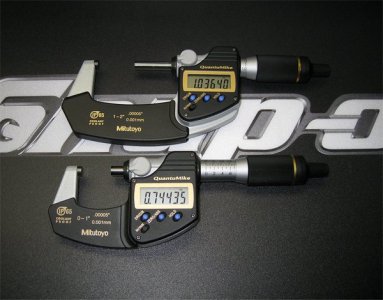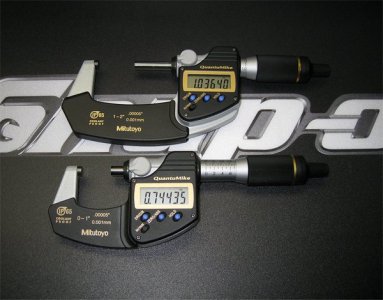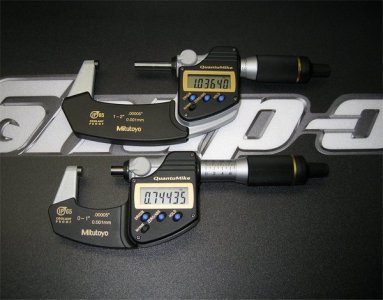- Joined
- Nov 24, 2013
- Messages
- 1,791
If you never get there, I'm enjoying you giving it a go. Lotta good info gets drug out in a post like this
Okay I really want to make sure I understand you here...maybe this is the answer!
I set the compound angle very imprecisely, just turned it until it was around 84 and clamped it down.
Then, I figured out the actual relationship between handwheel and tool feed by measuring it. By turning the stock true, then feeding the compound by 100 thou, cutting and then measuring the result. Which came out to about 0.0001065" feed for every 0.001" of compound handwheel. And then I did the tests based on that.
So when I was trying to hit 0.0071", I rotated the handwheel by 0.0071 / 0.0001065 = 66.7 thou.
But I want to make sure that explains what you are saying..it does right?
Im actually pretty comfortable if I can maintain 3 tenths. It definitely is tantalizing to see if I can get down to 1 tenth but I have a feeling that may be impossible.
However, when I get my ER32 chuck, I'm going to repeat these tests and do everything as close as possible to the chuck and see if that helps. It will be several inches closer to the spindle bearings than the 4 jaw chuck setup I'm doing now. I have to think there is a tenth or so to be had by the reduced runout!



